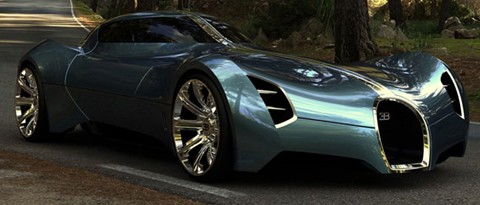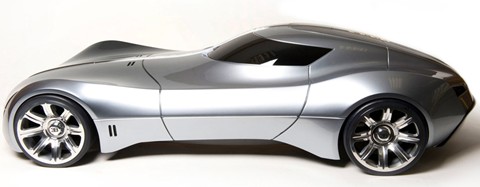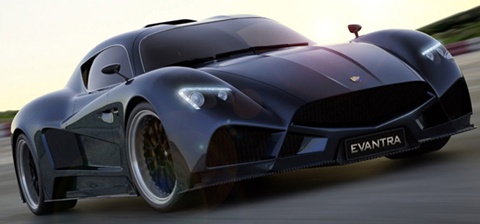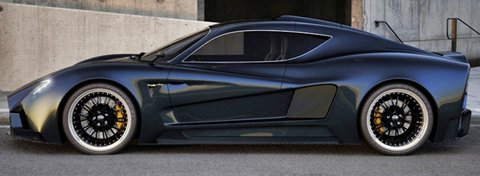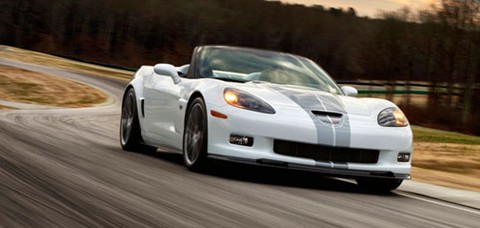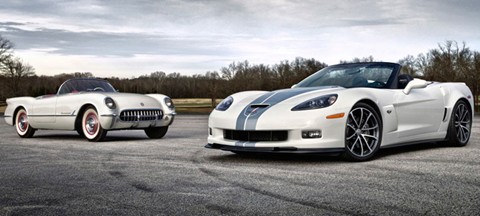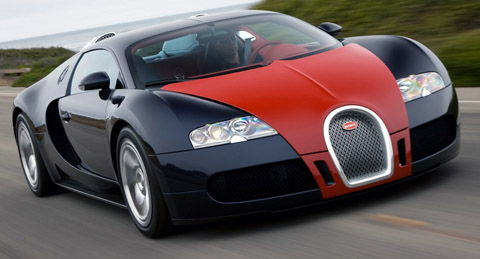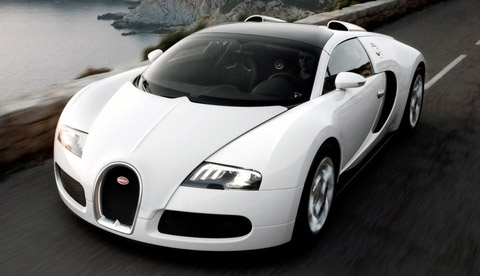
The third-generation 2013 Audi RS4 Avant come with base price of €76,600 in Germany and scheduled to begin in fall 2012. New 2013 Audi RS4 Avant polished 19-inch, ten-spoke forged aluminum wheels shod with 265/35-series tires are standard. Audi also offers 20-inch wheels with 265/30-series tires. These are available in a new, polished, titanium-look, five-V-spoke design plus two additional variants in the five-arm rotor design. The calipers 2013 Audi RS4 Avant are painted high-gloss black; the front calipers have eight pistons each and sport RS logos. The ESP stabilization system has a Sport mode and can be fully deactivated. The ceramic brakes are especially lightweight, robust and durable.
New 2013 Audi RS4 Avant comes with LED daytime running lights encircle the xenon plus units like a clasp in the wedge-shaped headlights. The distinctive bumpers and the two oval tailpipe caps of the dual exhaust system dominate the rear end and are integrated into an upturned diffuser. Audi also offers a sport exhaust system with a voluminous sound and black caps for 2013 Audi RS4 Avant. Elegant light strips adorn the LED rear lights. 2013 Audi RS4 Avant is 20 millimeters (0.79 in) longer and 24 millimeters (0.94 in) wider than the A4 Avant, but 20 millimeters (0.79 in) lower. A choice of eight colors is available: one solid and one metallic finish, four pearl-effect colors and the two specially pigmented crystal-effect colors, Prism Silver and Panther Black.


Interior the 2013 Audi RS4 Avant comes with completely in black. Chrome clasps subtly accentuate switches and control elements. Carbon inlays are standard, with brushed matte aluminum, Aluminum Race, black piano finish or a light stainless steel mesh available as options. The standard heated front sport seats Audi RS4 Avant with integrated headrests are power adjustable and covered in a combination of black leather and Alcantara. Fine Nappa leather in either Black or Moon Silver accentuated with Stone Gray piping is optionally available.
The pedals, the footrest, the air vents, the shift paddles on the steering wheel, the MMI buttons and other controls shine in an aluminum-look finish. Audi offers exclusive high-grade leather packages for all seating options, including a design package with honeycomb quilting for the RS4 bucket seats. Rounding out the list of optional equipment is a broad range of state-of-the-art driver assistance and communication systems, including the Bluetooth online car phone that connects the 2013 Audi RS4 Avant with the Internet.

Engine specifications the 2013 Audi RS4 Avant combines potent performance with a high level of everyday practicality. It’s 4.2-liter V8 produces 331 kW (450 hp); the seven-speed S tronic and quattro permanent all-wheel drive transfer that power to the road. The 4,163 cc powerplant produces 331 kW (450 hp) at 8,250 rpm for a specific output of 108.1 hp per liter. Its maximum torque of 430 Nm (317.15 lb-ft) is available from 4,000 to 6,000 rpm. The responsive V8 with its red-painted cylinder head covers accelerates the 2013 Audi RS4 Avant from zero to 100 km/h (62.14 mph) in 4.7 seconds on its way to a governed top speed of 250 km/h (155.34 mph). This can be increased to 280 km/h (173.98 mph) upon request.
Hand-built at Audi’s plant in Györ, Hungary, the 4.2 FSI engine combines its impressive power with exemplary efficiency, consuming on average less than 11 liters of fuel per 100 km (21.38 U.S. mpg). The standard seven-speed S tronic 2013 Audi RS4 Avant also contributes to the vehicle’s good fuel economy. Drivers can let the lightning-fast dual-clutch transmission shift automatically or change gears manually using the selector lever or the paddles on the steering wheel.


The third-generation 2013 Audi RS4 Avant come with base price of €76,600 in Germany and scheduled to begin in fall 2012. New 2013 Audi RS4 Avant polished 19-inch, ten-spoke forged aluminum wheels shod with 265/35-series tires are standard. Audi also offers 20-inch wheels with 265/30-series tires. These are available in a new, polished, titanium-look, five-V-spoke design plus two additional variants in the five-arm rotor design. The calipers 2013 Audi RS4 Avant are painted high-gloss black; the front calipers have eight pistons each and sport RS logos. The ESP stabilization system has a Sport mode and can be fully deactivated. The ceramic brakes are especially lightweight, robust and durable.
New 2013 Audi RS4 Avant comes with LED daytime running lights encircle the xenon plus units like a clasp in the wedge-shaped headlights. The distinctive bumpers and the two oval tailpipe caps of the dual exhaust system dominate the rear end and are integrated into an upturned diffuser. Audi also offers a sport exhaust system with a voluminous sound and black caps for 2013 Audi RS4 Avant. Elegant light strips adorn the LED rear lights. 2013 Audi RS4 Avant is 20 millimeters (0.79 in) longer and 24 millimeters (0.94 in) wider than the A4 Avant, but 20 millimeters (0.79 in) lower. A choice of eight colors is available: one solid and one metallic finish, four pearl-effect colors and the two specially pigmented crystal-effect colors, Prism Silver and Panther Black.


Interior the 2013 Audi RS4 Avant comes with completely in black. Chrome clasps subtly accentuate switches and control elements. Carbon inlays are standard, with brushed matte aluminum, Aluminum Race, black piano finish or a light stainless steel mesh available as options. The standard heated front sport seats Audi RS4 Avant with integrated headrests are power adjustable and covered in a combination of black leather and Alcantara. Fine Nappa leather in either Black or Moon Silver accentuated with Stone Gray piping is optionally available.
The pedals, the footrest, the air vents, the shift paddles on the steering wheel, the MMI buttons and other controls shine in an aluminum-look finish. Audi offers exclusive high-grade leather packages for all seating options, including a design package with honeycomb quilting for the RS4 bucket seats. Rounding out the list of optional equipment is a broad range of state-of-the-art driver assistance and communication systems, including the Bluetooth online car phone that connects the 2013 Audi RS4 Avant with the Internet.


Engine specifications the 2013 Audi RS4 Avant combines potent performance with a high level of everyday practicality. It’s 4.2-liter V8 produces 331 kW (450 hp); the seven-speed S tronic and quattro permanent all-wheel drive transfer that power to the road. The 4,163 cc powerplant produces 331 kW (450 hp) at 8,250 rpm for a specific output of 108.1 hp per liter. Its maximum torque of 430 Nm (317.15 lb-ft) is available from 4,000 to 6,000 rpm. The responsive V8 with its red-painted cylinder head covers accelerates the 2013 Audi RS4 Avant from zero to 100 km/h (62.14 mph) in 4.7 seconds on its way to a governed top speed of 250 km/h (155.34 mph). This can be increased to 280 km/h (173.98 mph) upon request.
Hand-built at Audi’s plant in Györ, Hungary, the 4.2 FSI engine combines its impressive power with exemplary efficiency, consuming on average less than 11 liters of fuel per 100 km (21.38 U.S. mpg). The standard seven-speed S tronic 2013 Audi RS4 Avant also contributes to the vehicle’s good fuel economy. Drivers can let the lightning-fast dual-clutch transmission shift automatically or change gears manually using the selector lever or the paddles on the steering wheel.


 RSS Feed
RSS Feed Twitter
Twitter 6:04 PM
6:04 PM
 Tasawar Mughal
Tasawar Mughal
